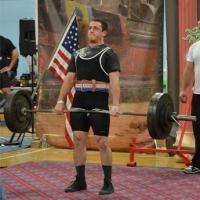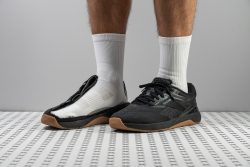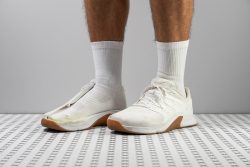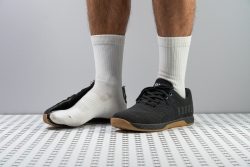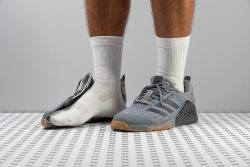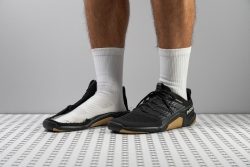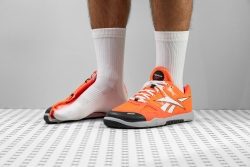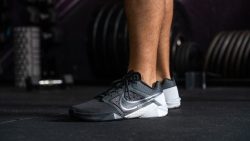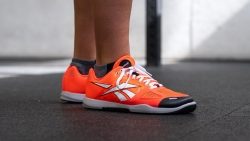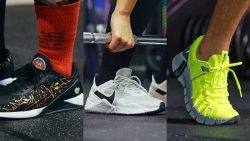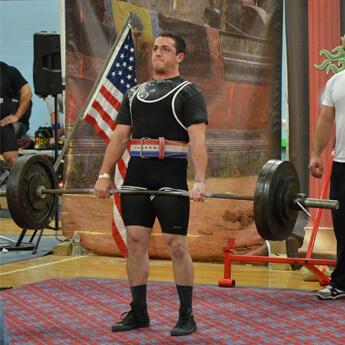7 Best Crossfit Shoes in 2025
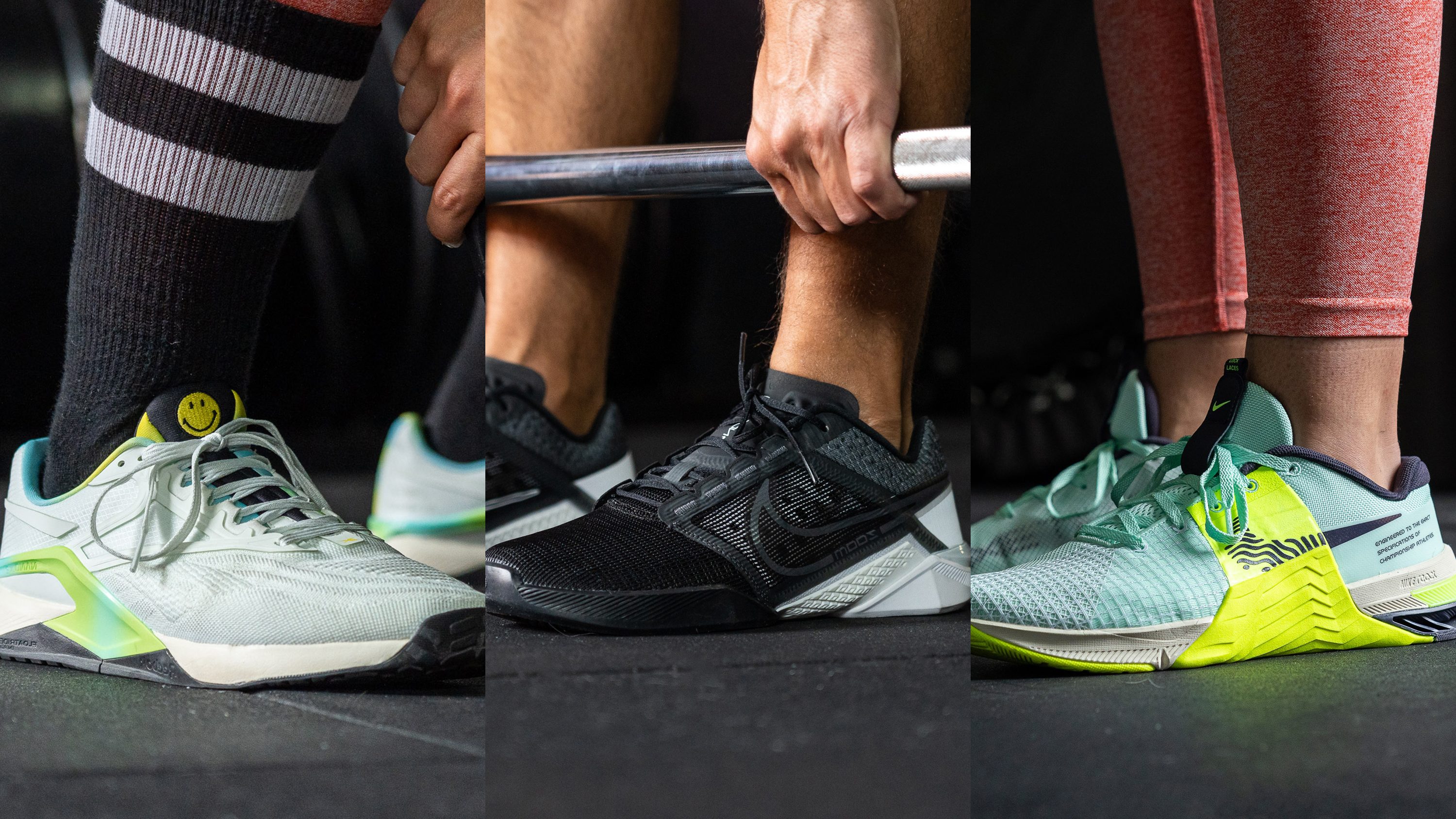
We buy shoes ourselves. We earn commissions when you buy through us, at no extra cost. Why trust us
A Crossfit session involves a lot of different movements, from a warmup run to a series of box jumps, from holding a plank to lifting 400 lbs. That’s why Crossfit shoes must live up to a large span of expectations.
Most Crossfit shoes host all the necessary features to face demanding training sessions and competitions. But there is also room for variety as some shoes are best for heavy lifting, some are a bit lighter and more cushioned for cardio, and some are comfortable enough for all-day wear.
We have tested Crossfit shoes in the gym and in our lab. Because of that, we're proud to showcase here our best picks in different categories.
How we test crossfit shoes
To achieve the most objective and data-backed shoe reviews on the web, we do the following:
- We buy each CrossFit shoe we want to test with our own money. No sponsorships allowed.
- We get firsthand experience training in the shoes. We like to explore their versatility. Therefore, we use them in as much high-intensity training as we can, dedicating a significant amount of time to each activity: jumping, sprinting, cycling, deadlifting, squats, and more.
- We split open the shoes and perform various lab tests. These lab tests almost always support what we experience while working out in the shoes. This also gives us different quantitative data that we can interpret qualitatively.
Best Crossfit shoes overall















































What makes it the best?
We discovered Metcon 10 offers the best features for CrossFit, deserving to be crowned as the best overall among CrossFit trainers in our lab records. It's a confidence booster with the superior stability it offers, holding down our feet well when it’s time to lift. It offers the flexibility needed for various WODs and agility exercises.
Despite the absence of a raised heel, Metcon 10 shines in weightlifting. We measured a grounded 22.8/16.2 mm platform, which makes us more sensitive to the surface. Its wide and supportive base keeps us planted, whereas its midfoot band and sturdy upper establish a firm foothold for stability. It even has Hyperlift—a non-compressible insert in the heel for added support when lifting.
Metcon 10 gives the flexibility and grip we need for burpees and plyometrics. In our bend test, it's 13.2% more flexible than average. Plus, the midsole offers strong energy return, with 63.0% in the heel and 61.2% in the forefoot!
Meanwhile, the outsole bites through the gym floor, backed up by its 0.38 score in our traction test, ensuring we can focus on our workout without wobbles.
Unfortunately, Metcon 10 missed out on breathability. It feels too stuffy for sweaty indoor sessions, so we can’t recommend it in hotter seasons.
Pros
- More versatile Metcon overall
- One of the lightest Metcons ever!
- ReactX adds shock absorption and energy return
- Increased forefoot flexibility
- Still amazingly stable for weightlifting
- Fantastic upper durability (even for rope climbs)
- Great grip on gym floors
- Highly secure foot lockdown
- Accommodating fit and toebox
- Handy Lace Tuck
Cons
- Outsole could be more durable
- Upper lacks breathability
Crossfit shoes with the best shock absorption
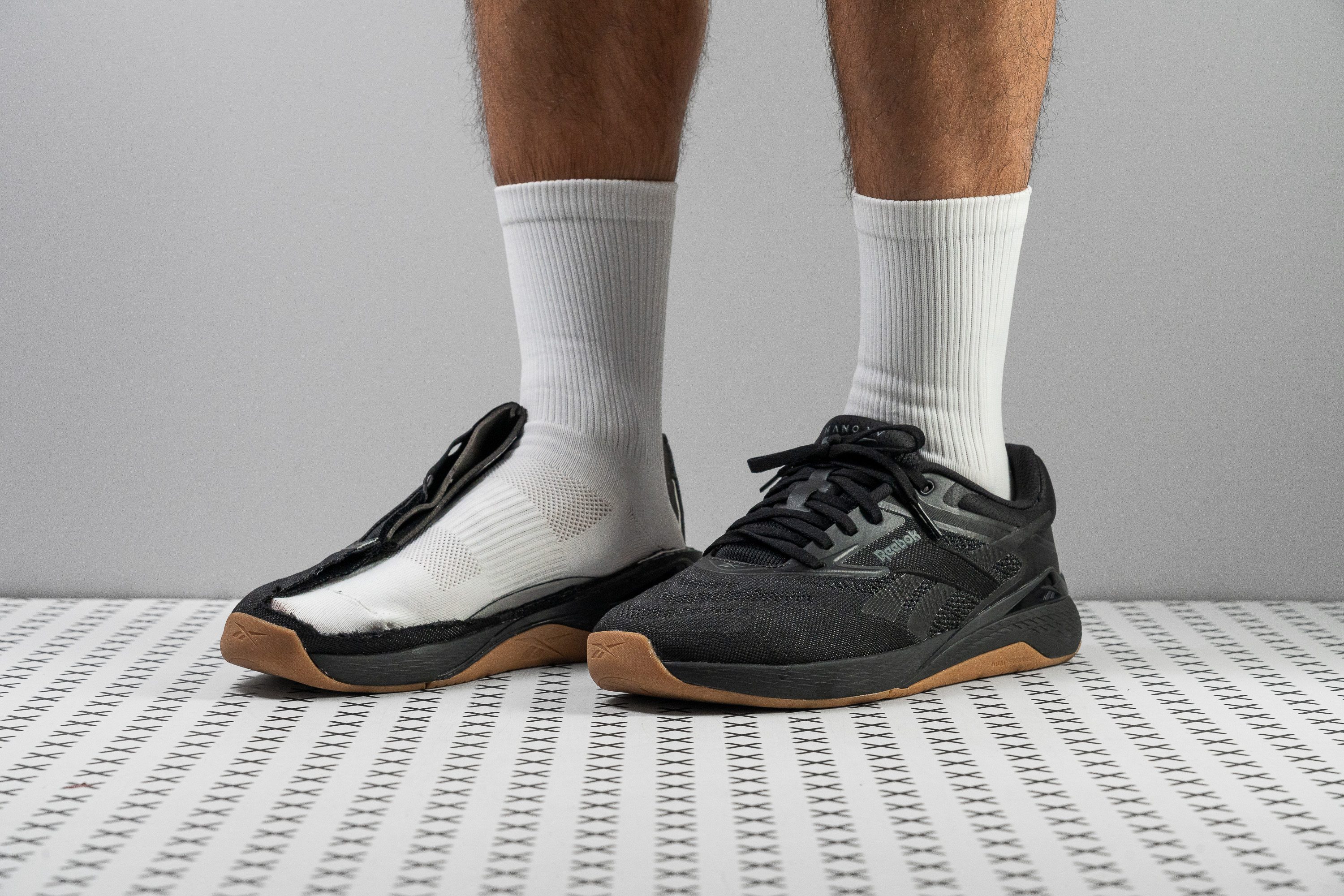











































What makes it the best?
Pros
- Versatile for all-around gym use
- Increased impact protection in the forefoot
- Very planted and stable heel
- Fantastic durability and wear resistance
- Padded and comfortable step-in feel
- Secure foothold and containment
- RopePro protection for rope climbs
Cons
- Lacks grip on wet and dusty floors
- Not for wide feet
- Heavier than average
Best Crossfit shoes with a wide toebox
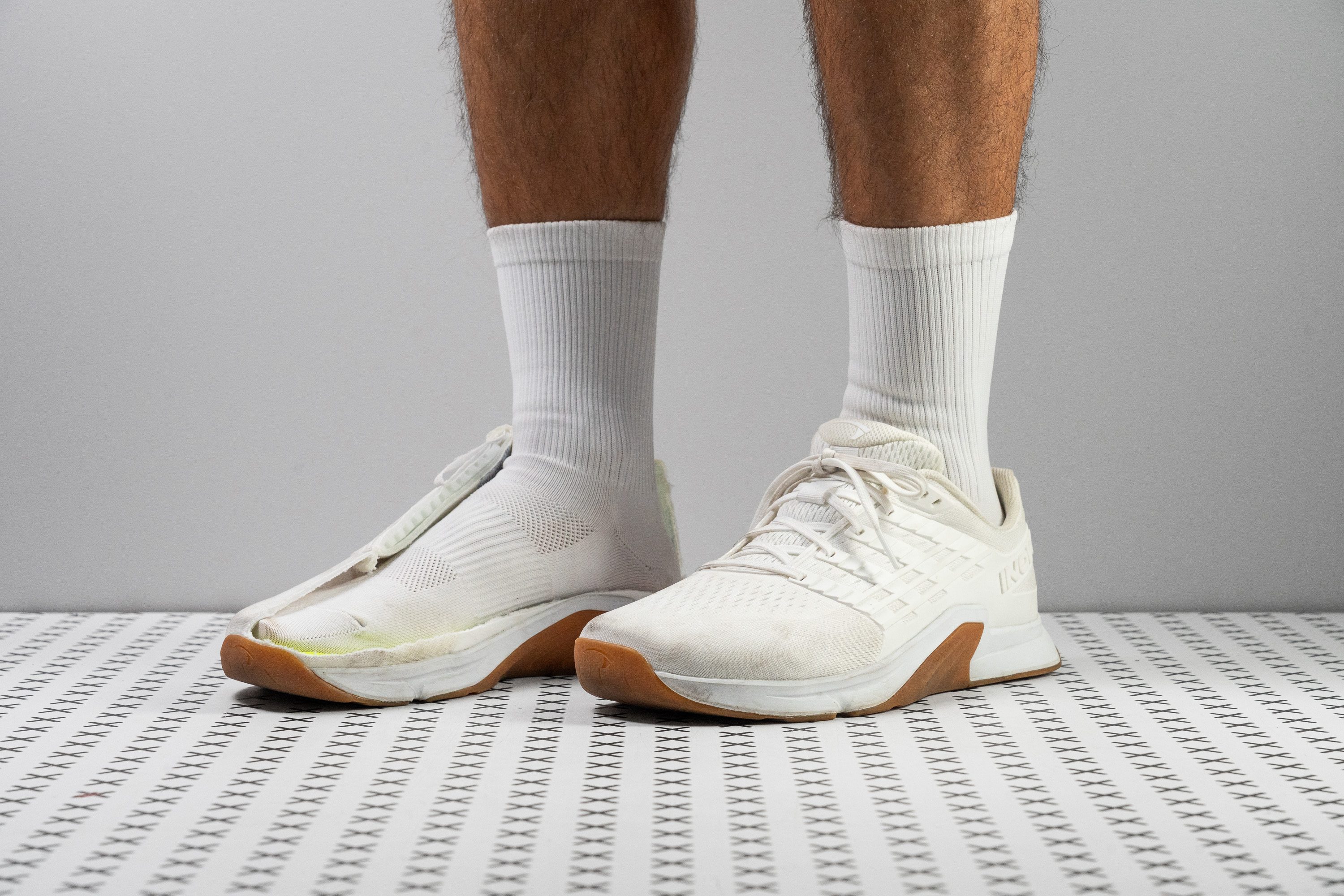










































What makes it the best?
We brought the Inov8 F-Lite Max to the box and enjoyed its unwavering support and its enormous room for toe splaying in a minimal package. Lab results reveal it has several stabilizers, such as the Met-Cradle cage, and that it offers the best wide toebox among CrossFit shoes.
We created a gel mold to confirm its roomy fit, and recorded an unusually high measurement of 78.1 mm in the toebox. For context, the average is only 73.8 mm! All our toes rested comfortably with no pressure points, even when our feet started to swell.
In the midsole, we found tall sidewalls and the Met-Cradle cage in the midfoot. The latter offers excellent lateral support, generating significant twist resistance, as proven by its 4/5 score.
Amazingly, it only weighs 10.5 oz (298g) despite all the added support and dimensions.
However, athletes who lift heavy or PR weights regularly should go for a sturdier shoe, such as the F-Lite Max, which features an incompressible TPU heel.
Pros
- Versatile gym all-rounder
- Great balance of cushioning and stability
- Fantastic for wide feet
- Highly flexible forefoot
- Excellent outsole durability
- Protection for rope climbs
- Lighter than average
Cons
- Lacks breathability
- Not for narrow feet
- Not for heavy lifting
- Below-average outsole grip
Best lightweight Crossfit shoes
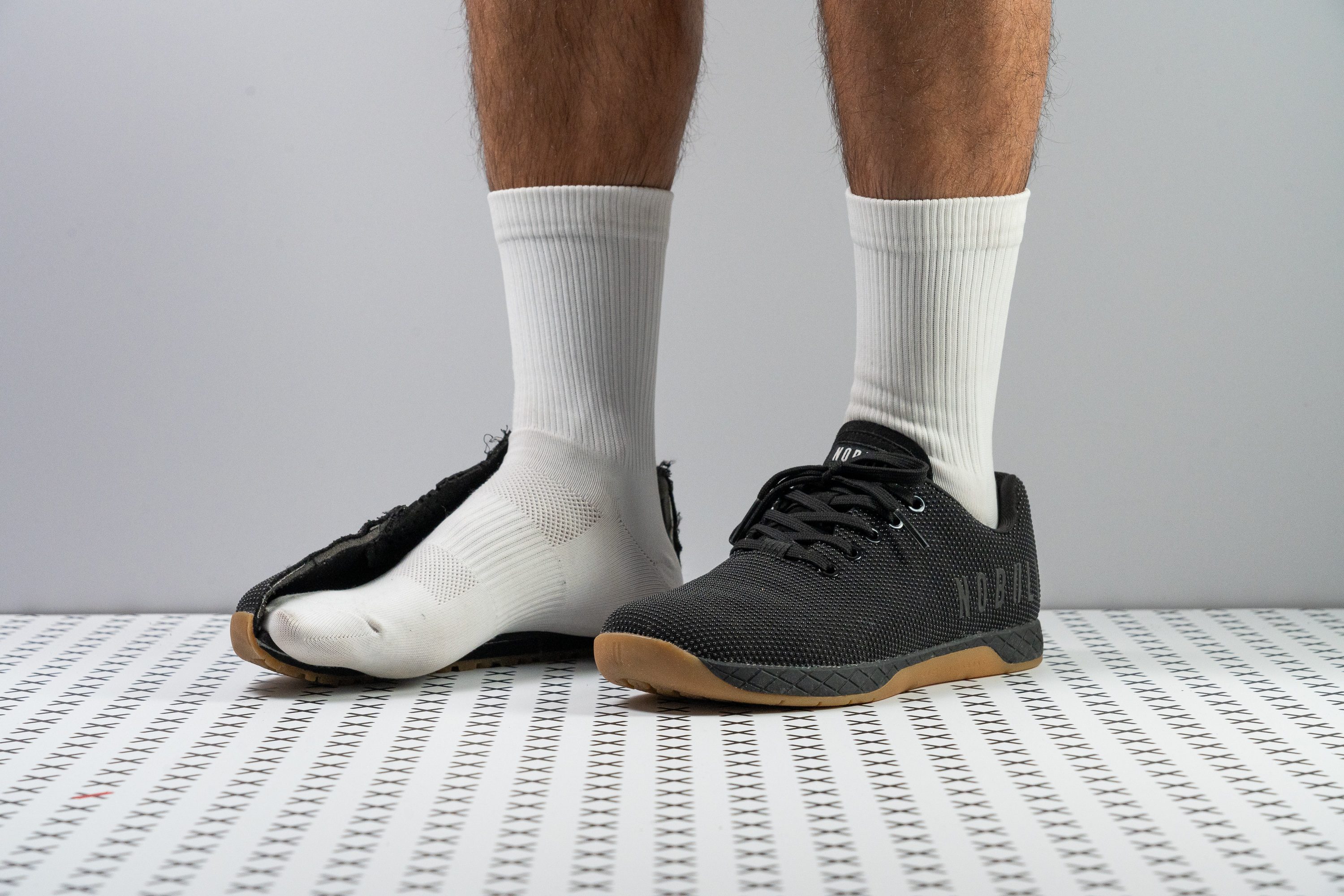


































What makes it the best?
In the world of training shoes, where the average weight is 11.5 oz (326g), the NOBULL Outwork is a light trainer at just 10.4 oz (294g). But the shoe is far from lightweight when it comes to its performance in a Crossfit box, as its fantastic flexibility, solid stability, and outstanding durability make it our top lightweight Crossfit trainer.
The NOBULL Outwork features tremendous flexibility, which makes it a fabulous shoe to wear for HIIT workouts and agility drills. After putting it through our 30-degree bend test, we found that it is 9.9% more flexible than the average training shoe.
But the shoe still has enough stiffness to be a stable lifting shoe. Its midsole is 24% firmer than the average training shoe, and we felt it hardly compressed when lifting moderate weights on our power and Olympic lifts. Moreover, the shoe has a fairly flat platform, offering optimal ground contact.
Meanwhile, the SuperFabric upper lives up to its name as it is extremely durable. Even rope climbs barely scratch the incredibly tough material, so it will take some serious abuse inside the box to wreck the upper.
However, that super-durable upper comes at the cost of breathability as our feet got quite hot, particularly after high-intensity workouts. Neither smoke nor light could pass through the upper in our lab tests, which is why we graded the shoe's breathability the lowest score of 1 out of 5.
Pros
- Versatile for any workout
- Premium Crossfit trainer
- Comfortable for all-day wear
- Grips various surfaces and rope
- Sturdy for moderate weightlifting
- Easy to clean
- Highly durable upper
- Simple design with plenty of colorways
Cons
- Minimal shock absorption
- Not so breathable
- Pricey
Most breathable Crossfit shoes
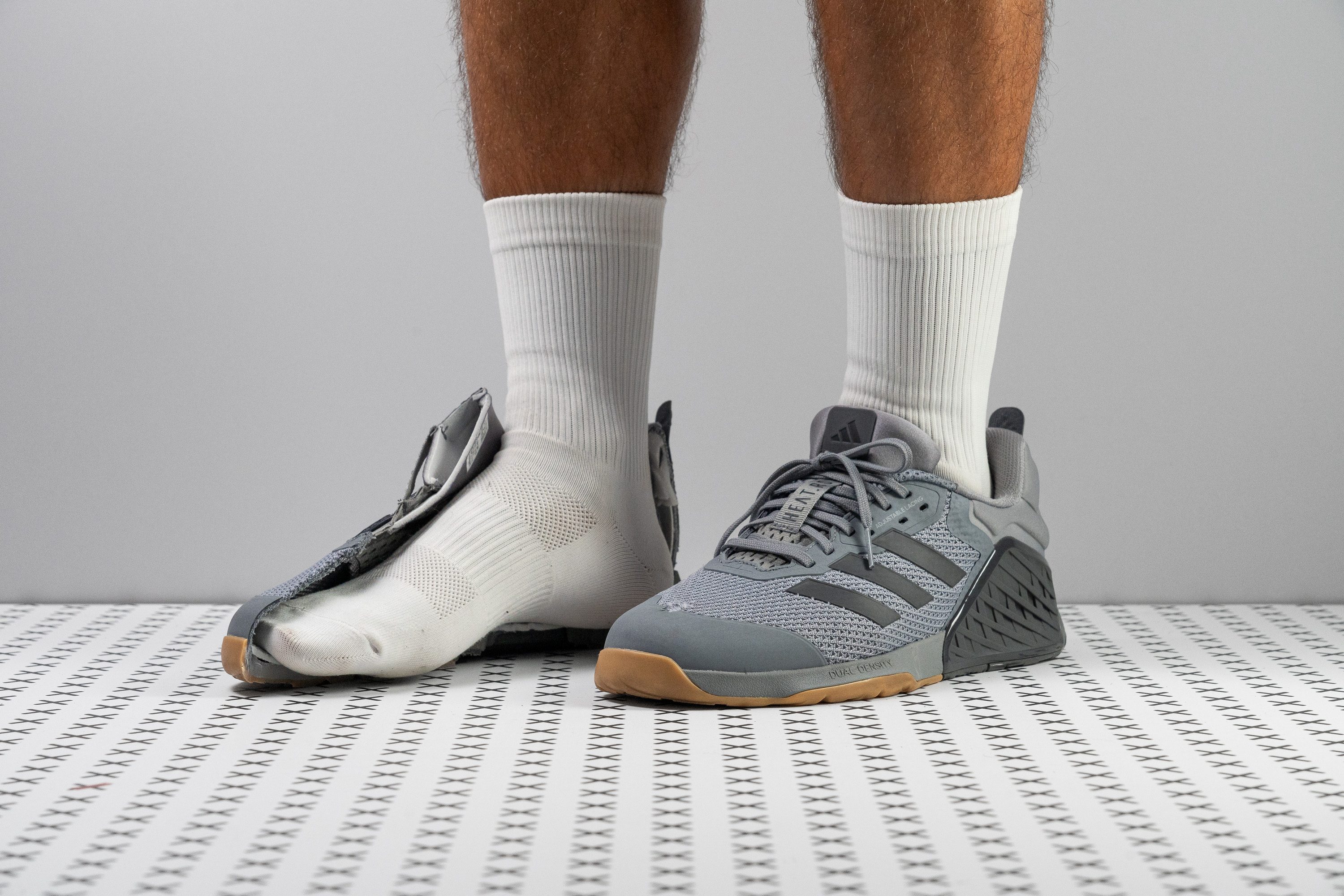





















































What makes it the best?
The Adidas Dropset 3 made our jaws drop with its remarkable foothold and top-level ventilation. Its permeable upper and HEAT.RDY technology brought sheer delight to our intense workouts, making it our best breathable CrossFit shoe in the lab. Its structured elements kept us unshakingly stable without overpowering rigidity.
Our feet felt refreshed even during heated sessions because of the flow-through upper and the unobstructed elements in the sole. It includes a large aperture in the middle for airflow and is complemented by. a perforated insole, which explains its 5/5 breathability rating in our lab.
Dropset 3 has the perfect set-up for lifting. Its grounded 22.6/14.8 mm stack has a dual-density configuration: a firm 41.0 HA foam in the heel that won't compress under heavy loads, and a softer 21.5 HA in the forefoot for cushioned landings during repetitive jumps. Besides that, the GeoFit Sensepods in the ankle area secured our feet in place.
In addition, the forefoot measures a wide 116.9 mm for enhanced stability. Even underfoot, the Adiwear outsole has the Traxion pattern to ensure solid braking power and control. It felt impossible to lose our balance with this trainer.
However, we can’t recommend this shoe for more cardio-focused workouts since its 12.1 oz (343g) build will feel too bulky for this type of exercise.
Pros
- Exceptional stability for lifting and lateral movements
- Very wide and grounded platform
- Extra durable and grippy outsole
- Very secure foothold
- Flexible enough for plyometrics
- Fantastic breathability
- Accommodating toebox
Cons
- Not great for running and walking (clunky heel)
- Can't be worn outside because of sole apertures
Best minimalist Crossfit shoes











































What makes it the best?
The Inov8 Bare-XF Pro delivers intimate ground connection through its stripped-down cushioning, light frame, extreme flexibility, and roomy toebox, which we all verified through our lab assessments. The shoe moves in unison with us, allowing us to be in complete control of each footwork. It undeniably tops the charts for minimalism in the CrossFit category.
Bare-XF Pro offers raw surface feedback through its low 6.9/6.8 mm stack. Besides its minimal cushion and genuine zero drop, it received one of the lowest shock absorption readings: 12 SA in both the heel and forefoot, confirming its direct contact underfoot.
Bare-XF Pro promotes effortless movement, driven by its light and pliable build. At 8.7 oz (248g), it’s 19.0% below the average trainer. It also displayed one of the lowest resistance to bending (3.3N), making it feel even more weightless since it’s 67.3% more pliable than average as per our bend test.
Its generous room for toe splay and broad feet enhances its barefoot sensation. With extra room all around, from its massive 79.7 mm width to its 31.2 mm height, we had zero pinch points and could rest all our toes comfortably.
Unfortunately, airflow is minimal, too. The dense upper limits ventilation, so we can only recommend this trainer in cold weather or air-conditioned spaces.
Pros
- True barefoot-like experience
- Foot-shaped and roomy toebox
- Super lightweight
- Extremely flexible
- Sock-like in-shoe feel
- Promising durability
- Protection for rope climbs
Cons
- Pricey for its kind
- Moderate breathability
- Subpar outsole girp
Crossfit shoes with the best value
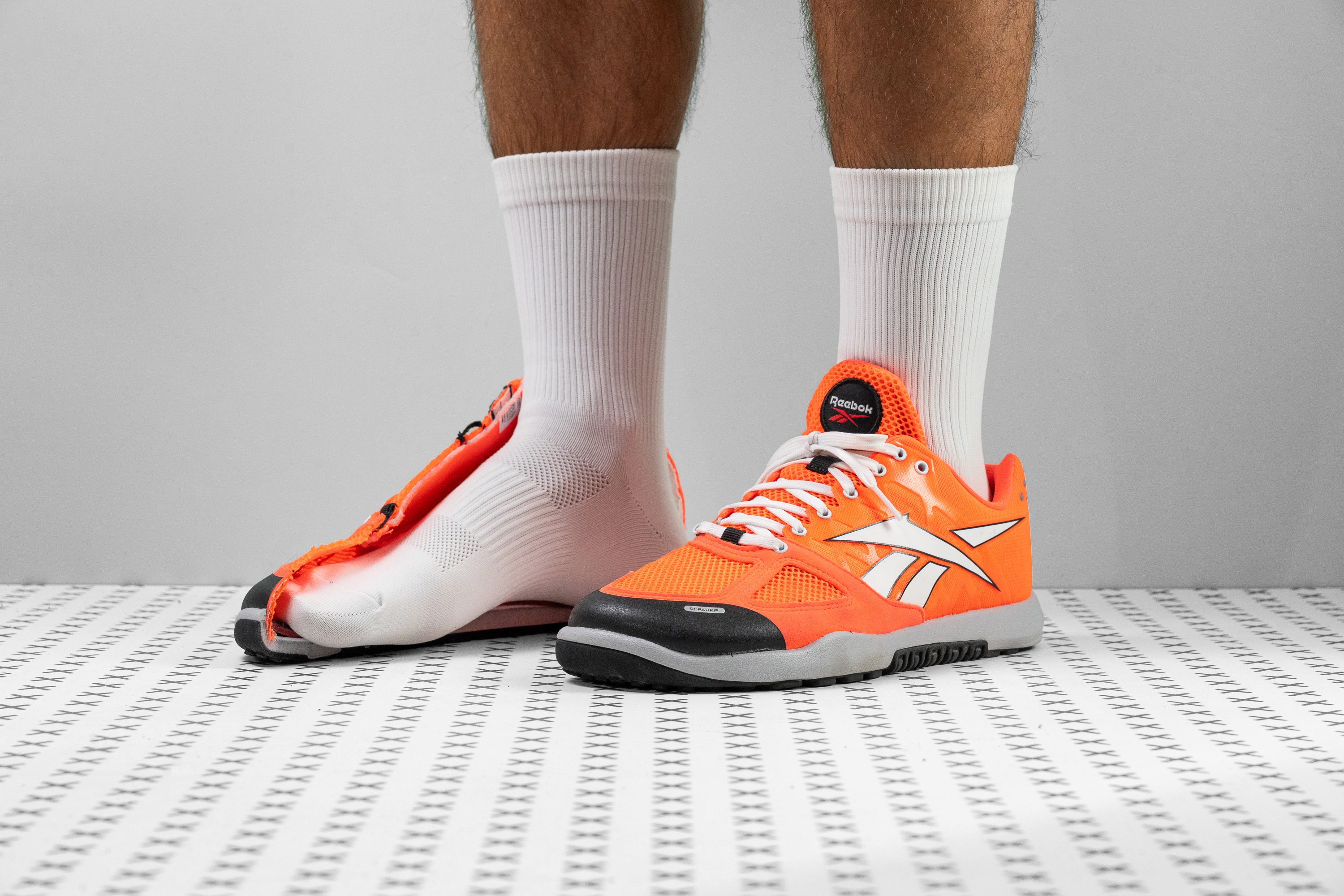










































What makes it the best?
At $120 per pair, the Reebok Nano 2.0 is just around the average price for CrossFit shoes which is $124. But the performance of this shoe isn’t average at all. Its amazing breathability truly left no chance for sweat. Its intense flexibility allowed us to move with much more ease, especially when there was a need to twist or go around bends. Finally, its nicely firm midsole gave us the chance to speed up without exerting so much effort.
We dissected this shoe in the lab and placed its upper material on top of a light source. The moment the light shone from below it, we saw gigantic ventilation holes, perfectly explaining the immense amount of breathability that we enjoyed. Hands down, the Nano 2.0 is a perfect 5 for ventilation.
A typical trainer would need 11.1N of force to bend at 30 degrees. Our stiffness tester showed that this shoe needed much less than that, 6.0N to be exact. Its flexibility allowed for more natural flexions of our feet, making this shoe such a pleasure to wear.
The midsole of this shoe registered a 31.0 on our HA durometer, significantly higher (therefore firmer) than the 27.0 average. This firmness not only helped with acceleration because of its springy effect in motion, but it also aided us in attaining stability during lifting because of its inherent anti-wobble properties.
It’s just too unfortunate that the durability of the upper was not able to keep up with the greatness of the Nano 2.0 from Reebok. There was already significant damage after a couple of seconds of Dremel drilling.
Pros
- Pleasantly lightweight
- Low-profile and minimal
- Grounded platform
- Highly breathable
- Very flexible
- Spacious toebox
- Good outsole traction
Cons
- Lacks cushioning for jumps and runs
- Upper is not durable
- Tongue slips
What is a Crossfit shoe?
Crossfit shoes are the most versatile, stable, and sturdy category of cross-training shoes.
Priced about $20 higher than regular trainers, they are more suitable for athletes who train regularly and want to achieve the highest performance in Crossfit. As a beginner, you don't have to invest in a dedicated Crossfit shoe just yet.

Several key features set a Crossfit shoe apart from a regular training shoe:
- low profile and minimal cushioning
- enhanced support and stability
- higher durability (+protection for rope climbs)
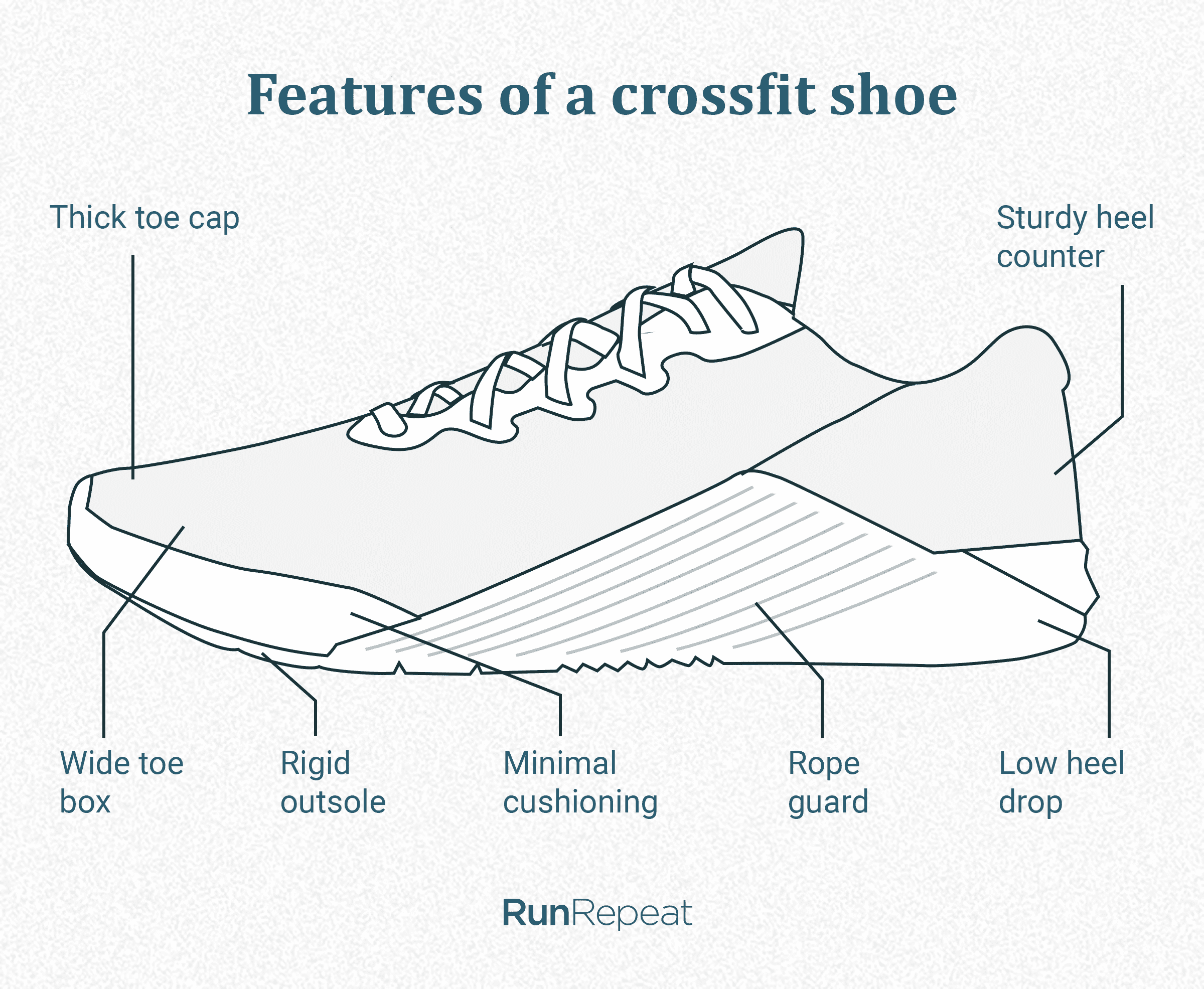
Cushioning in Crossfit shoes
Pressing a heavy barbell over your head, you want to feel firmly planted on the ground. There should be no squish or wobbling under your feet whatsoever.
That's why Crossfit shoes are built with the following midsole parameters:
- low-to-moderate shock absorption
- low-to-moderate drop
Crossfit shoes are expected to have less cushioning so that they don't absorb too much of the force you exert when lifting heavy weights or when stabilizing yourself. That's why doing Crossfit in a running shoe is a bad idea.
Testing shock absorption in a Crossfit shoe
Based on our lab data, the average shock absorption of Crossfit shoes (75 SA) is even lower than that of training shoes on average (85 SA). It makes them less compressible and, as a result, more stable.
A lower heel-to-toe offset of 0-8 mm is another characteristic that makes Crossfit shoes more stable and planted. A flatter foot position, where the heel is not elevated above the toes too much, creates a more surefooted platform for tough Crossfit WODs.
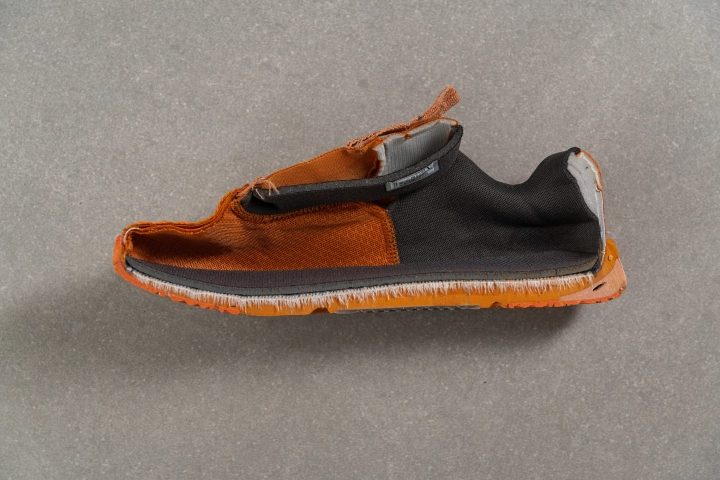
Lateral support and stability
Stability is where Crossfit shoes undercut many other cross-trainers.
In addition to their firm and grounded platforms, these trainers are equipped with supportive components like sidewalls, shanks, sturdy heel counters, and more to keep the foot securely in place.
We assess the torsional rigidity of Crossfit shoes in a manual test.
We also check each shoe's heel counter stiffness with a squeeze and push.
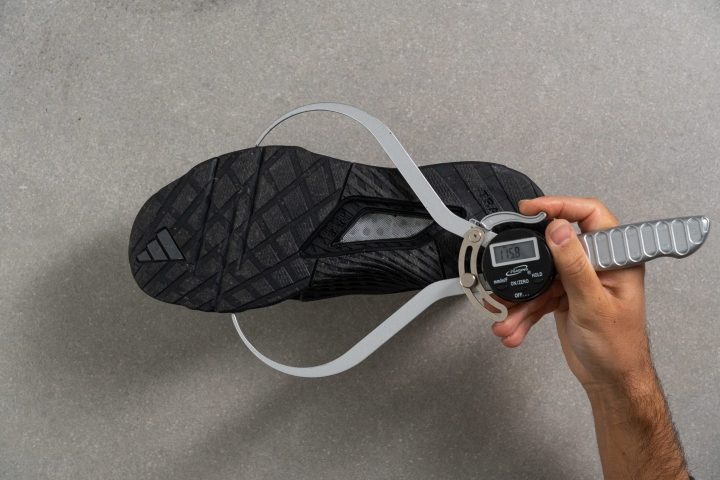
Crossfit shoes with lower torsional rigidity (score: 1-2) are less stable but more flexible. We can recommend them for fast-paced workouts with lots of agile footwork.
Durability of Crossfit shoes
There are a few durability features that usually come with Crossfit shoes:
- rope guards that shield the shoe's upper and sole from rope burn when descending
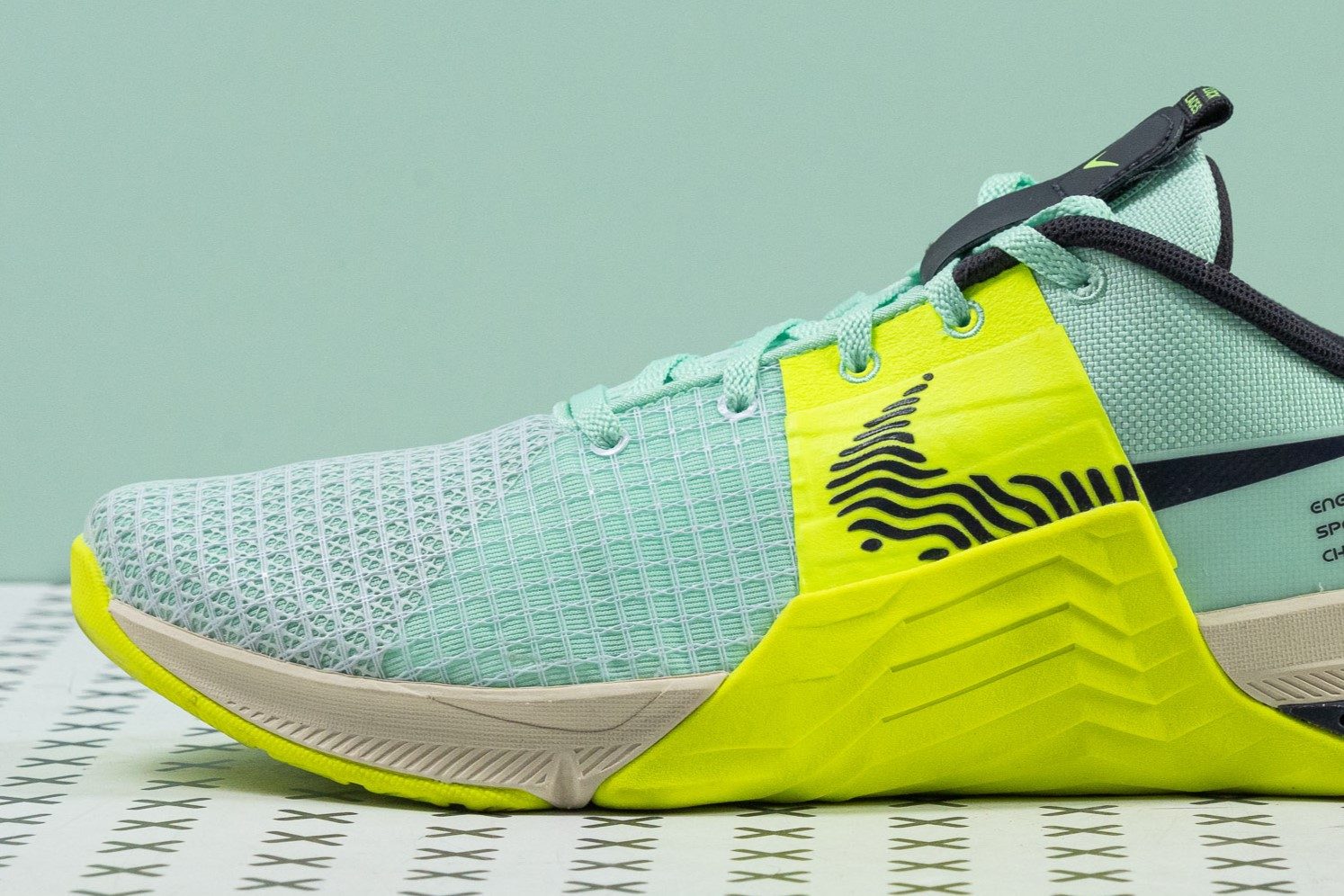
- additional protective overlays that minimize wear and tear on the upper material
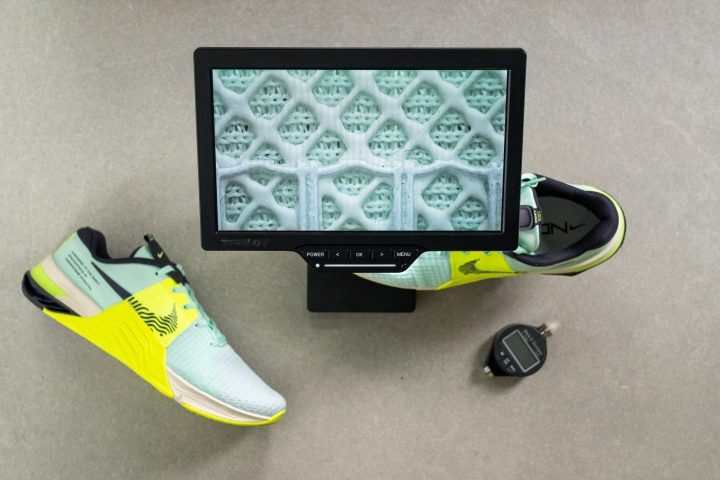
We use a Dremel with a sandpaper tip to test the abrasion resistance of each Crossfit shoe in our lab.
Our lab results show that Crossfit shoes score higher in the durability department compared to standard cross-training shoes.
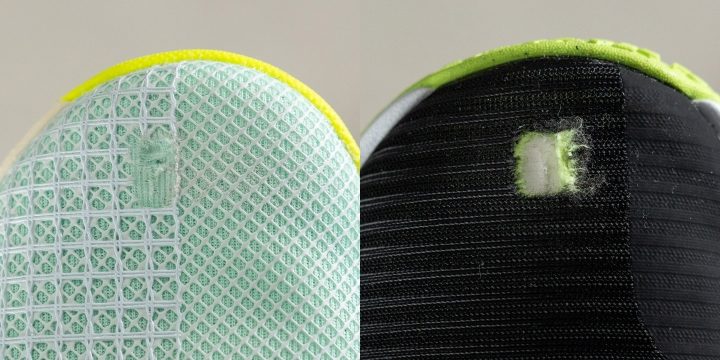
*Outsole durability: the lower number means more durable. It indicates how many millimeters of outsole rubber have been burnt by our Dremel.
Consider the weight
The weight of Crossfit shoes ranges from 10 oz (285g) to 13.5 oz (385g), which is on the heavier side of cross-training shoes.

But why did these shoes get so heavy? Well, all the features that make them irreplaceable for Crossfit add up to the bulk of these shoes: wear-resistant overlays, stiff supportive components, wider platforms, rope guards, and more.
The industry's flagship Crossfit shoes tend to weigh more (over 12 oz) but you can be sure that they provide plenty of stability and support.
Lighter Crossfit shoes, on the other hand, are more suitable for short runs, and jumping exercises, and in some cases provide better ground contact.
TIP: You don't have to choose one over the other as there are more than a few solid Crossfit shoes in the middle.
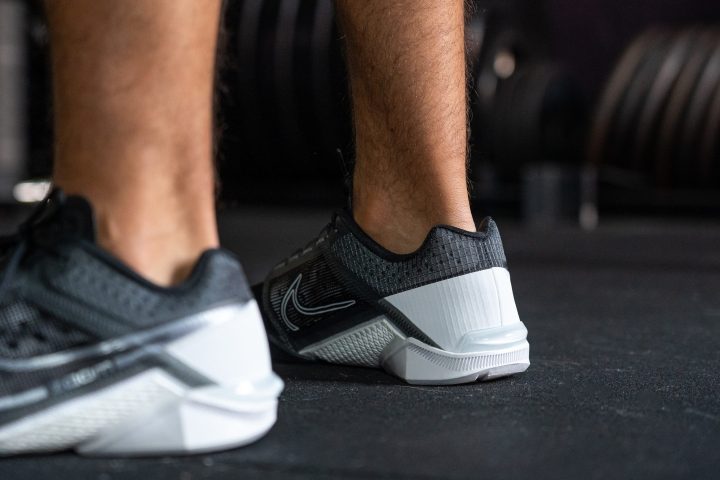
How to find breathable Crossfit shoes
Because of their reinforced uppers and protective overlays, Crossfit shoes are not the most breathable category of athletic shoes.
But having the heat and sweat trapped inside your gym shoes is not the most pleasant experience either. Not to mention that it leads to bad odor, blisters, and other misfortunes.
In our lab, we perform a series of tests to determine the ventilation capacity of each Crossfit shoe:
- we use a smoke-pumping machine to check the shoe's capacity to let the heat out
- we hover the shoe's half-cut upper over the light to see its ventilation areas
- we take a closer look at the fabric through our microscope to check its anatomy
In the end, each Crossfit shoe's breathability is rated on a 1-5 scale, where 5 is the most breathable.
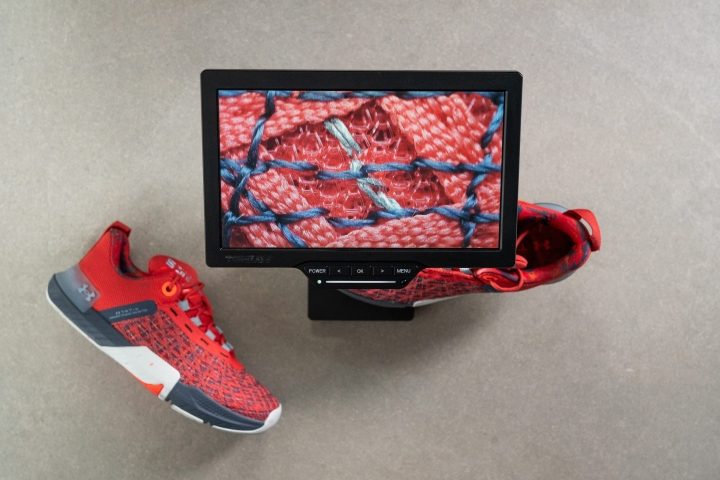
Crossfit shoes vs. weightlifting shoes
These days, Crossfit shoes have advanced so far in their level of stability that most athletes don't even consider lifting shoes anymore. Why bother if you can enjoy the convenience of having just one pair of trainers for everything you do at the gym (even lifting 400 lbs!)?
Just look at how much lateral stability both shoes have.
Lateral stability in a Crossfit shoe
Lateral stability in a weightlifting shoe
But no matter how stable Crossfit shoes get, there are a few core characteristics of lifting shoes that can never make these two shoes equal:
- heel elevation
- non-compressible platform
- entirely flat and stiff base
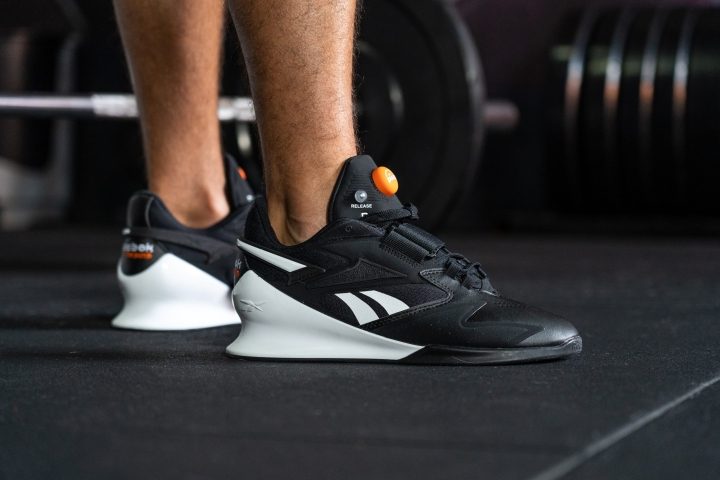
FAQs about Crossfit shoes
How will I know if a training shoe is appropriate for CrossFit?
Brands don’t market their shoes using the Crossfit name because they are not licensed to do so. But they have found a way to work around this restriction by naming their CrossFit-dedicated lines of shoes after specific terms used within the CrossFit community like Nike’s Metcon line.
Can you walk in Crossfit shoes?
Given their performance-oriented features and flat soles, Crossfit shoes aren’t intended for everyday use. They might be too expensive as well to wear casually. But they are flexible enough to be worn for many hours at the gym if you are coaching.
